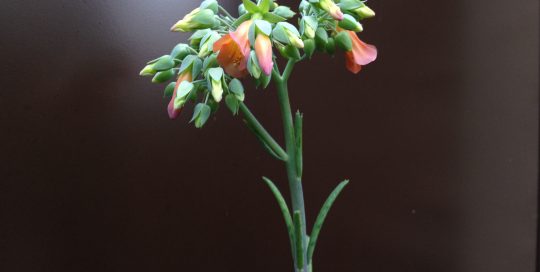Lucky, Colorful Oxalis
Views: 7923

Oxalis, often referred to as clover or shamrock, is a popular container plant for both outdoor and indoor planters.
Clover or Shamrock?
While it’s perfectly acceptable to use these common names, it can be a little confusing.
The name shamrock can be used for any of the three-leaved species of Oxalis or Trifolium. Although they grow all over the world, shamrocks are most often associated with Irish culture. St. Patrick associated the three leaves with the Holy Trinity.
Clover also can be used to describe any of the same three-leaved species. However clover is more often associated with either the various weedy species found in lawns and gardens. Or, for those with a keen eye, the lucky and rare four-leaf clover.
Colorful Oxalis
All that being said, for the purposes of this blog, we will focus on the various Oxalis species commonly sold in nurseries as container plants.
There are many different colors of Oxalis available. The most common foliage colors available are green or purple, but there are also several varieties with chartreuse, silver, red, or even variegated leaves.
Blooms are most often white, pink, or yellow, but can also be red or purple.
Plants may bloom all summer long in ideal conditions, but more often they will bloom sporadically throughout the growing season. Don’t be alarmed if the foliage closes up at night—this is perfectly normal behavior. Most commonly available species will reach between 6 and 12 inches high and wide at maturity, making them a great filler plant for mixed containers, especially those with striking purple or chartreuse foliage.
Growing Oxalis
Oxalis prefers soil that is consistently moist, but not soggy. Simply feel the soil before watering, and do not water if it feels damp.
That said, these are extremely forgiving plants for those of us who may not be the best at remembering to water. They will likely go dormant in response to overly dry conditions, but will bounce back when soil is rehydrated.
Also, depending on the species, they may even go dormant for two or three months, so don’t give up on them when the foliage dies back. Simply reduce watering, keeping the soil barely moist, and wait for new shoots to appear.
During this time, it is okay to move plants to a darker space until the new growth appears. An east- or west-facing window provides ideal light for growing Oxalis plants. During the growth period, they will benefit from an occasional feeding with a mild balanced fertilizer. Hardiness depends on the variety, but most are tender and will not survive a cold winter outdoors, so bring them inside when cold temperatures arrive and either treat them as a houseplant, or let them go dormant until spring arrives.
Meet Abbi Hayes
Abbi's Recent Posts

Kalanchoe delagoensis: Mother of Millions







